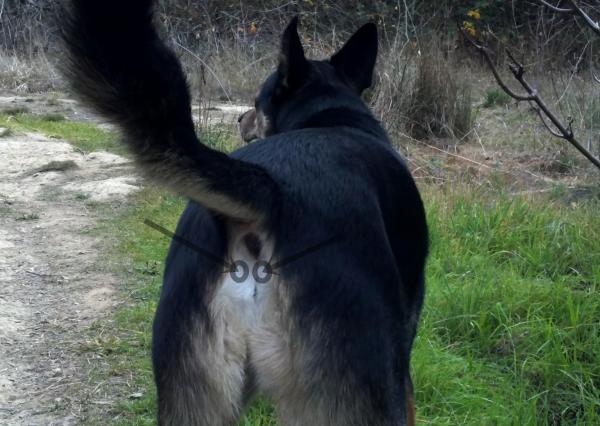All You Need to Know About Dogs' Anal Glands



See files for Dogs
The primary function of a dog's anal glands is to lubricate the rectum for better deposition during defecation. Some people may refer to them as anal sacs, which is technically true as they are a sac which contains these glands within. If the sacs aren't cared for regularly enough it can suffer from infections, bad odour and even an abscess - especially in the case of older dogs.
As an owner, how you clean and maintain healthy anal glands for your dog can be very important. Keep reading this AnimalWised article on all you need to know about dogs' anal glands.
What are they Exactly?
Anal glands are found in both dogs and cats. They are approximately the size of a marble situated on either size of the anus at the 4 and 8 o'clock positions. The primary function of anal glands is to store a lubricating substance which is employed to help them defecate properly.
The liquid is usually yellowish in colour, but can sometimes be brown. The smell is notoriously pungent and if you find traces of this substance on the dog's bed or the floor, your dog probably has an excess of accumulated liquid.
In addition to the aforementioned functions, anal glands also give each dog a unique identity. This is why dogs often sniff each other's bottoms as pressing the gland releases some of the gland's liquid and they can identify them. It seems distasteful, but is the canine equivalent of shaking hands.

What are the Potential Consequences of Not Emptying the Anal Glands?
Whilst dogs generally empty their anal glands themselves, they may face difficulties in doing so when they grow older, get pregnant or have some underlying condition which causes blockage.
If you decide not to do anything about it and your dog can't empty its anal glands as a result, it can lead to a serious problem such as:
- Infection
- Inflammation
- Discomfort
- Bad smell
- Abscess
- Cysts
- Adenoma
- Adenocarcinoma

What You Should Do?
Just because your dog doesn't secrete any sort of liquid at home, it doesn't mean that it doesn't have a significant accumulation. You have two options if you don't want to do it yourself: either take it to the vet or to the dog groomer. Both specialists are used to performing this task and they'll definitely know what they need to do.
However, veterinary and grooming bills can pile up and this is a task which might need to be done regularly. If you prefer to do this task yourself, we recommend that you do so on the terrace or garden and wear gloves.

How to Empty the Dog's Anal Glands
Once you know where the glands are (to each lower side of the anus), you're ready to begin. You'll need to get hold of a gauze to place just inside the anus so that the secretion won't get on your face or clothes as it can shoot out unexpectedly.
We recommend that you get another person to help you restrain the dog, since their natural tendency is to try and sit down when you begin the process. Remember that it can produce a strong smell, so wear something you don't mind getting damaged.
Lightly massage your dog's anus until you find the glands. Once you've located them, increase the pressure so that all the liquid is released from the anus. Once the release stops you should clean around the area with some water.

Frequency of Emptying Glands
You should keep an eye on dogs who have problems with the accumulation of liquids in their anal glands, especially with older dogs. Failure to do this can lead to serious problems as mentioned above.
There is some debate as to how often you should perform this task. If your dog is very healthy, it should happen normally. Unfortunately, the strange diets and habits of dogs mean that this is often unlikely and your dog will need a hand. Anal gland retention is more common in smaller breeds such as Chihuahuas and Beagles, so these dogs' anal glands should be emptied roughly once a month. You should always check on the amount of fluid accumulation that the dog is suffering from as the process can be uncomfortable and you don't want to do it unnecessarily.

An unpleasant task for both dog and owner, emptying your dog's anal glands can still be a necessary process and the relief your dog will feel makes up for any initial discomfort.
If you want to know what more you can do for your dog, check out How to Remove Fleas From Dogs.
This article is purely informative. AnimalWised does not have the authority to prescribe any veterinary treatment or create a diagnosis. We invite you to take your pet to the veterinarian if they are suffering from any condition or pain.
If you want to read similar articles to All You Need to Know About Dogs' Anal Glands, we recommend you visit our Prevention category.






 My dog has what it looks like hemorrhoids. I just found out that it's not. Taking him to the vet to make sure.
My dog has what it looks like hemorrhoids. I just found out that it's not. Taking him to the vet to make sure.






